A jeep safari in the haven for big mammals
Manas National Park is located in Assam. This forest is home for big mammals and the forest department allows safari ride for the tourists. I am not sure why this safari is not as famous as the ones provided in other Tiger Sanctuaries. We were not a fan of safari rides but we really enjoyed the safari in Manas National Park.
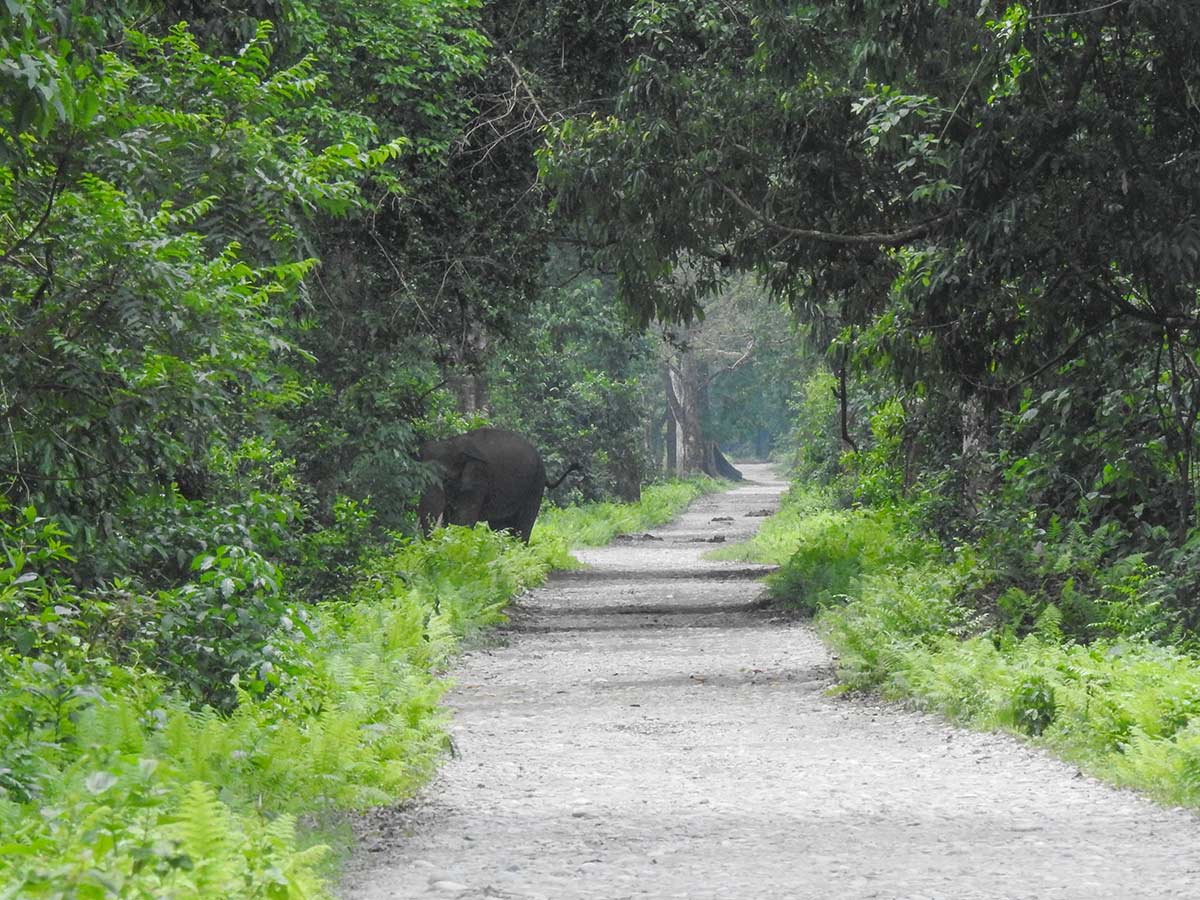
The easy way to reach Manas National Park is to arrive in train at Barbeta road railway station and then take a cab to reach the Manas National Park. As we were driving around in our rental car, we crossed the bad roads and traffic with lots of grumbling before reaching our stay which was located adjacent to Manas river a major tributary of Brahmaputra River.
It looked like an off season, so we were the only occupants in that resort. So the place was very calm and we started to relax forgetting all the crowds we faced just few hours back. The insect life was amazing and we went outside the campus to scan for moths.
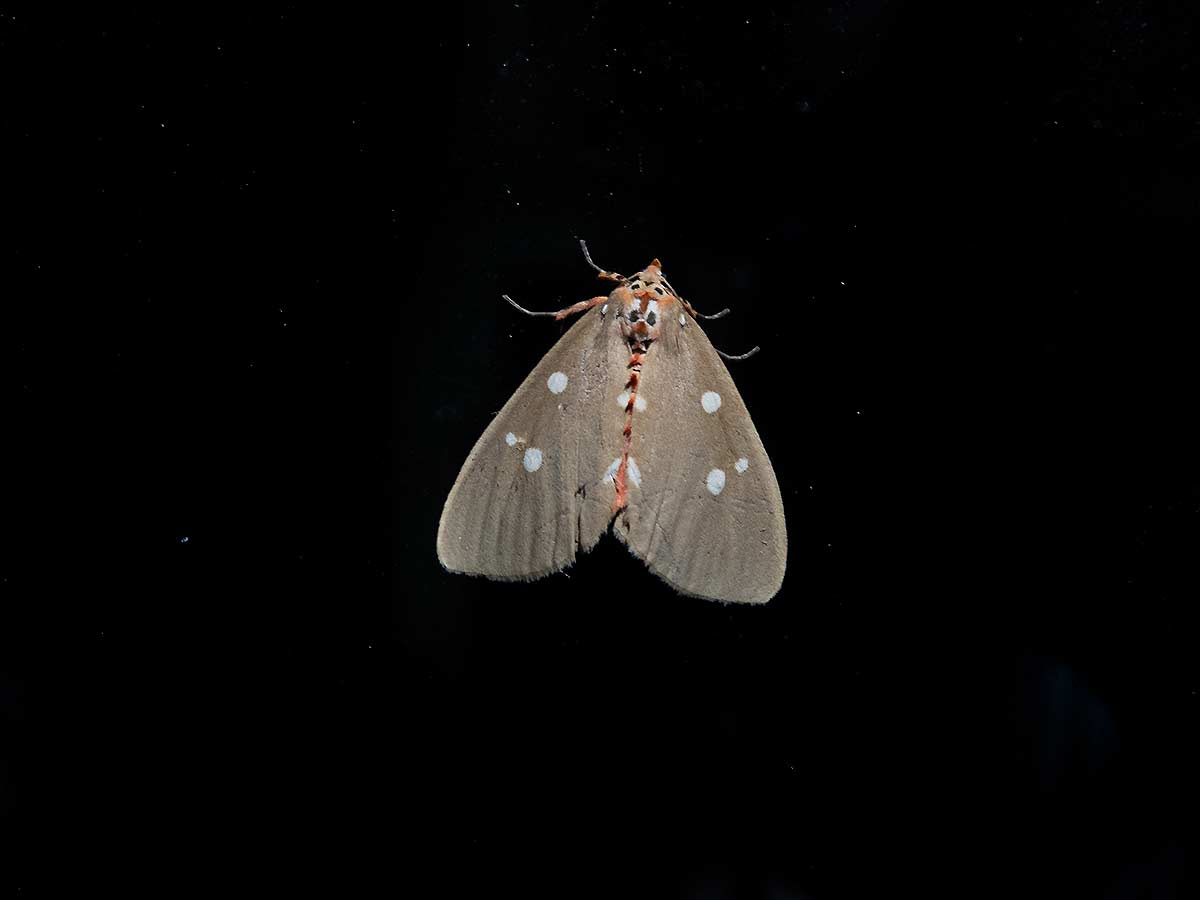
We went in search for tiny creatures in wild like moths , fireflies but the scene infront of us was totally unexpected. There was our gentle giant, an elephant standing on the grassland that was part of the reserve. It was just opposite to our stay , so we just stood there and admired the elephant. Once he started moving slowly, we went to the nearby river. I could see hundreds of fireflies there. The sound of water with the blinking flying lights was a beautiful memory for me which I will behold for my lifetime.
We arranged a full day safari after speaking with the resort manager. Next day early morning the jeep came sharply at 6’o clock along with a naturalist. We stopped at the ticket counter for few minutes and started our jungle safari eagerly. I was a bit put out by seeing a single plant covering the entire place amidst very tall Silk cotton trees. I was thinking about densely covered jungle once we stepped inside the national park. But then came a elephant family.
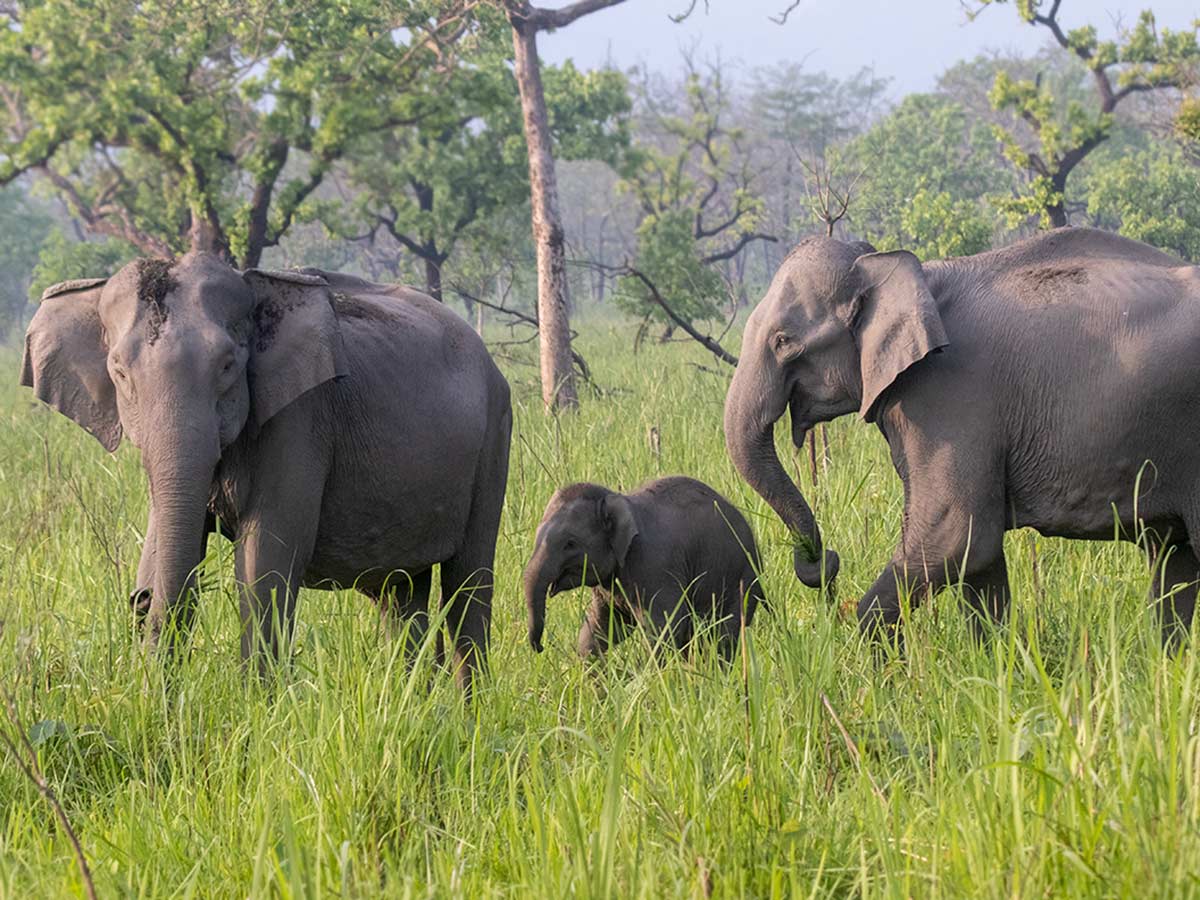
We were so excited to see them and waited till they crossed the road. One teen elephant who was left behind roared a little and joined the herd. We were really happy to see these elephants roaming around freely in this jungle. We had informed the naturalist that our primary aim was birding. So he took us into a side path where the jungle started getting dense like I expected.
Immediately we could sense the change in bird and butterfly activities. We could see Punchinello butterfly basking on almost every plant.
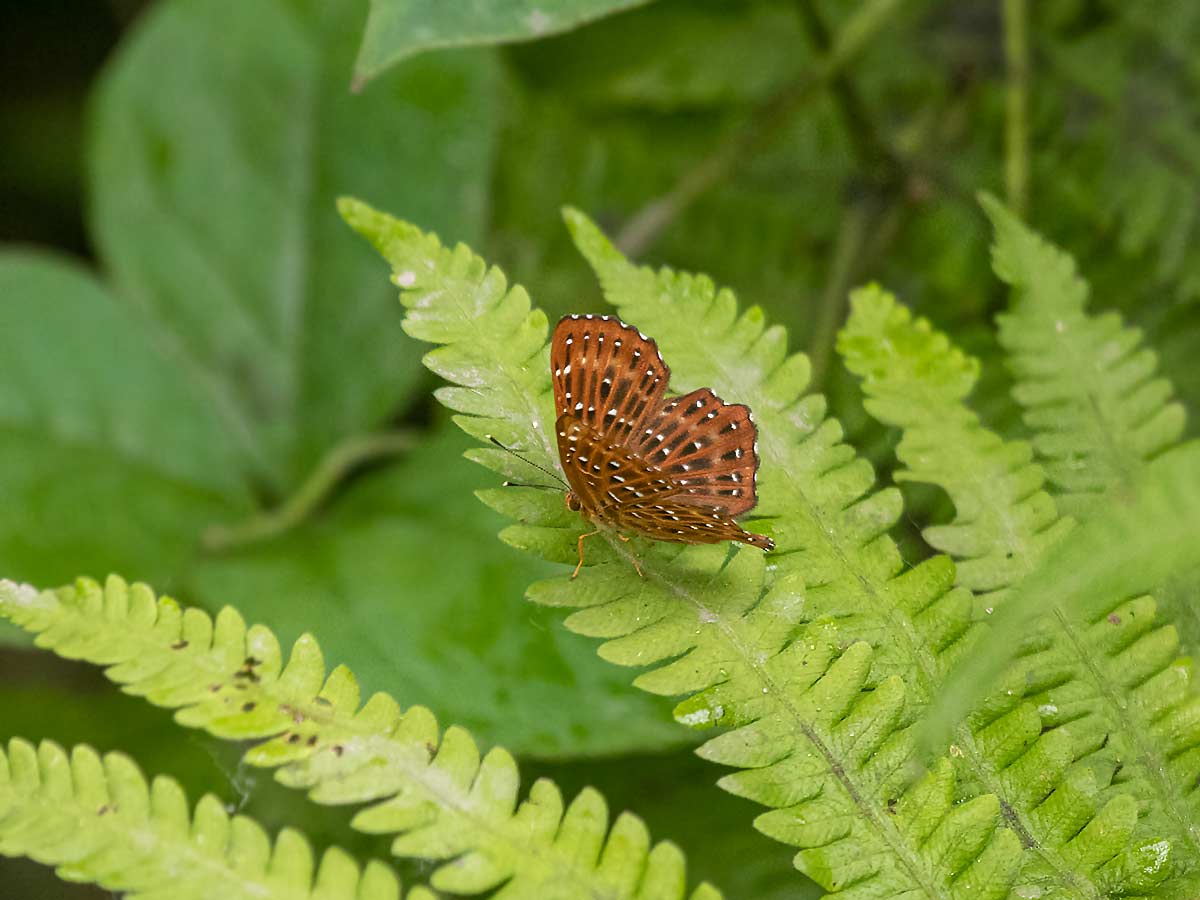
The Fire-breasted flower pecker, Red-breasted Parakeets, Gray-chinned minivet, Ruddy kingfisher were few of the beauties we encountered in this trail. Vinod spotted a pair of Kaleej Pheasants foraging on the ground silently. Then we heard a quick movement on the bushes and the naturalist said that was the Monitor lizard.
We had our eyes peeled for Trogons and Green Jay but we couldn’t spot any. Then the trail got more slurry and there was a branch on the pathway, so we had to return back.
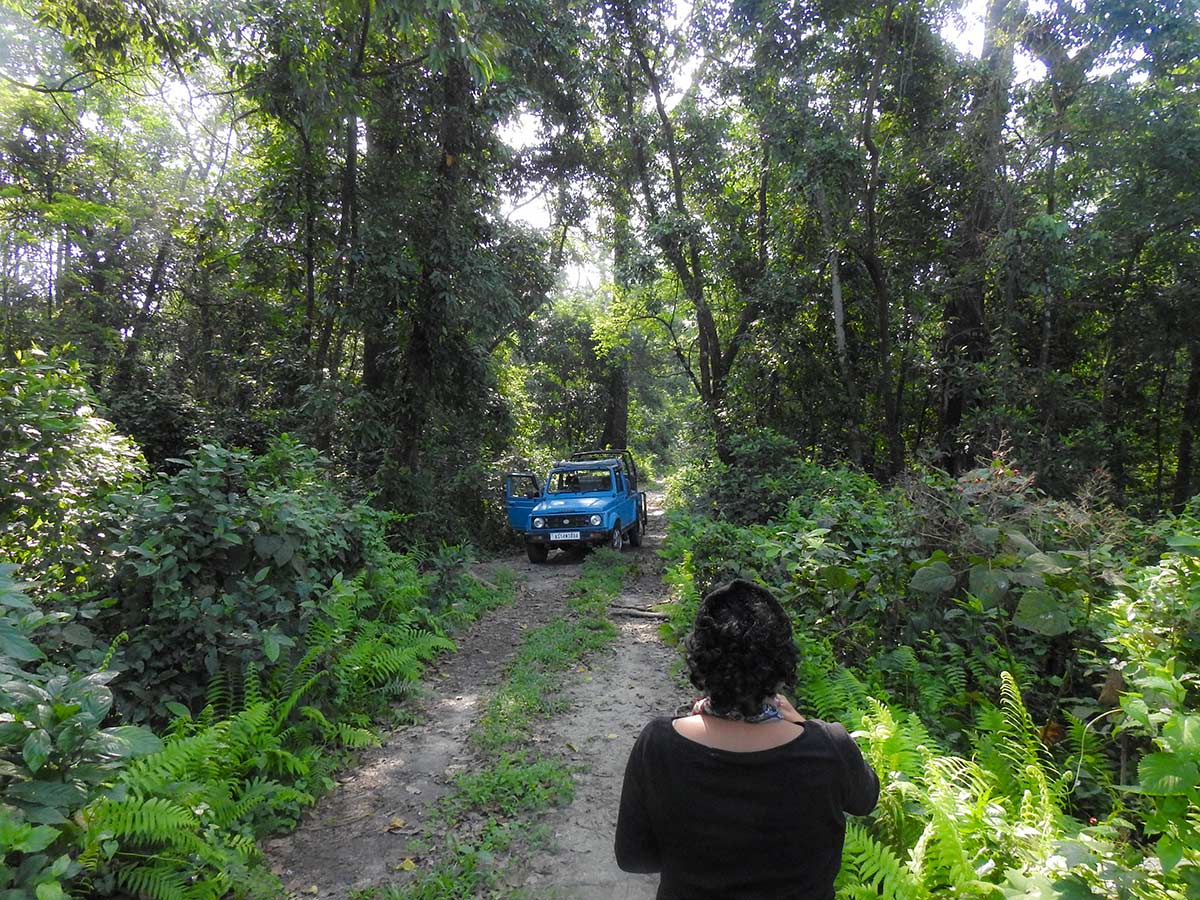
The Naturalist took us to another spot to see the rare, endangered White-bellied heron but we couldn’t find one. We just enjoyed the beauty of the Brahmaputra river and the River lapwings who were wandering on the sandbanks along with a Water Buffalo. The Water Buffalo with his long horns looked very majestic in that terrain.
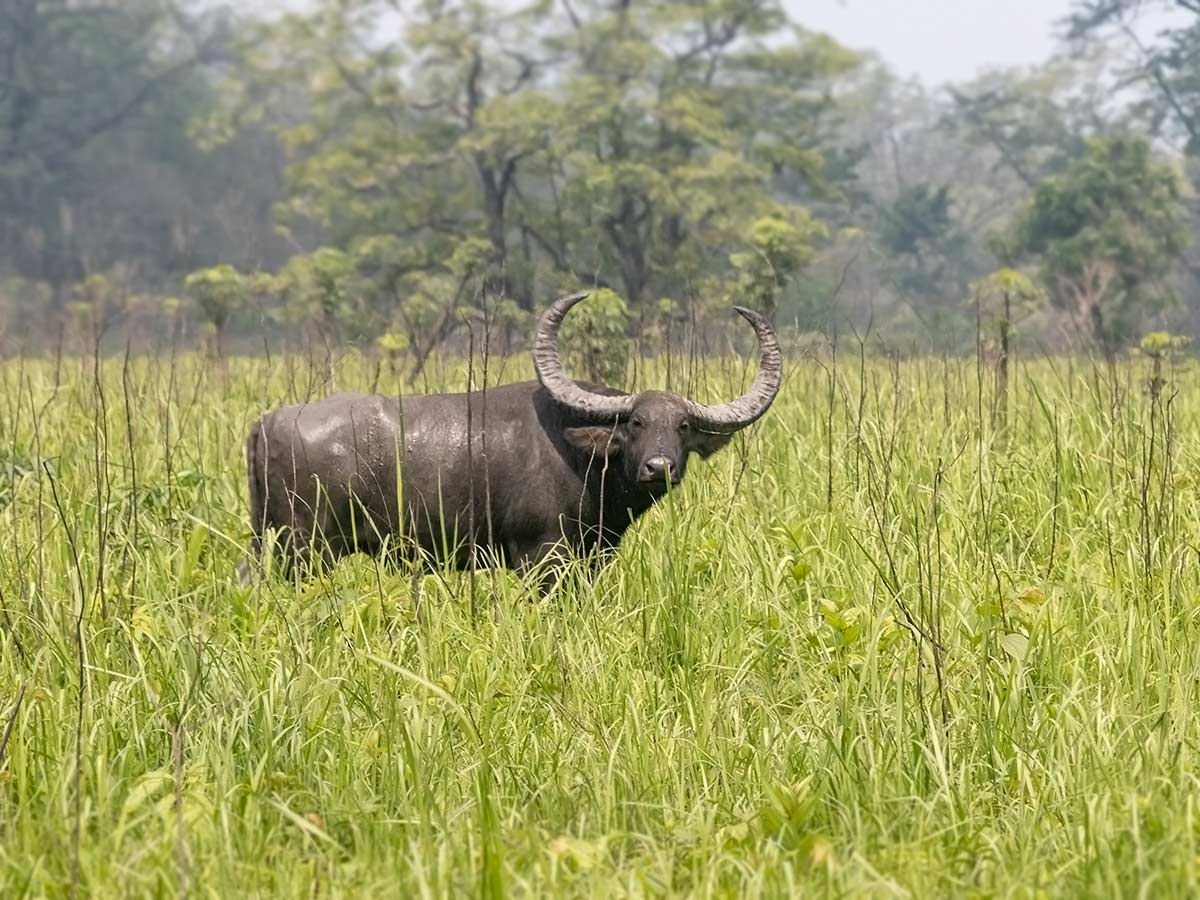
We continued our drive only to stop every few minutes for a bird or a mammal. We saw a group of Capped Langurs who were very quite and frolicking on the tree branches. They just saw us out of curiosity and continued with their routine. We met elephant herd frequently and in one place a baby elephant came out for outing with an elder sister. An adult was also keeping an eye on them but giving space for them to have fun. When we drove past them, the sister put her trunk on the baby in a protective way. My heart was melting and aching seeing their close family bonds and how this cruel world was treating them !
We didn’t realise the time was already past 1.30 PM and the naturalist had told us we have to reach the hotel soon for lunch otherwise there won’t be any food. So we told the driver to do non-stop driving but within seconds we screamed to stop as there were few Adjutant storks standing inside a bog.

It was such a beautiful sight to see these endangered birds in a beautiful landscape. Adjutant storks are scavengers, as their habitat is getting destroyed they are now seen mostly in the landfill areas. So seeing them in their own pristine habitat made us very satisfactory. Then we proceeded for lunch which was simple and we came to know that a stay also can be arranged in that place. We rested there for a while watching the Tokay gecko, flowing river, few butterflies and then the naturalist took us for a short walk.
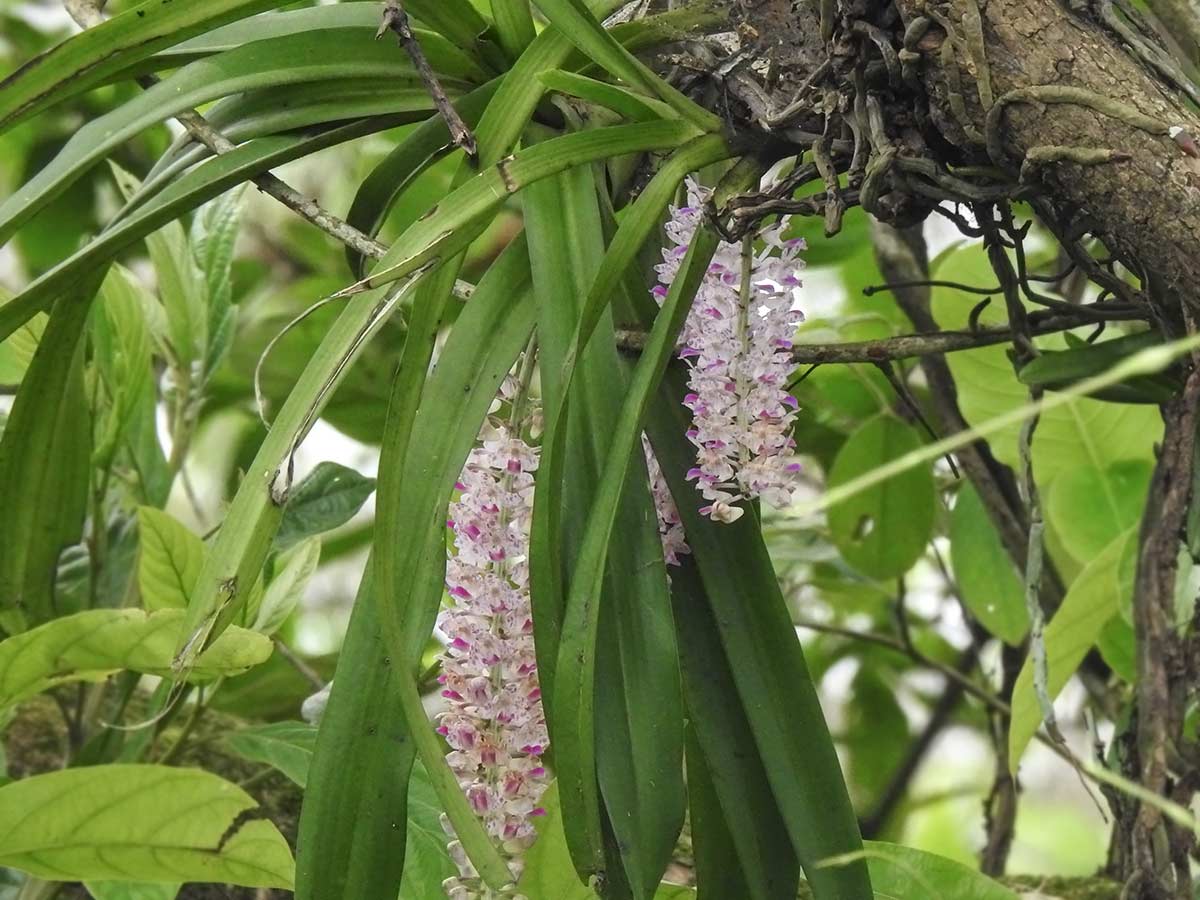
He took us till the entrance to Royal Manas Sanctuary from our end but sadly it was closed after COVID. So we just took a step to other side and mocked ourselves that we had entered Bhutan !! We continued our drive and now the driver knew that we get excited for every little things in nature. When we stopped to see a pair of Rufous-necked laughingthrush, the driver spotted a caterpillar and showed us. In one site we saw a fruiting fig tree and like we suspected there was a Great Indian Hornbill eating the berries. Seeing our vehicle , he flew and landed on a old, tall tree nearby. On another tree we saw a lazy Malayan Giant Squirrel , he was so merged with the tree that we could spot him only with the fluffiness of his tail. Manas really looked like a paradise for birds and other wild beings.
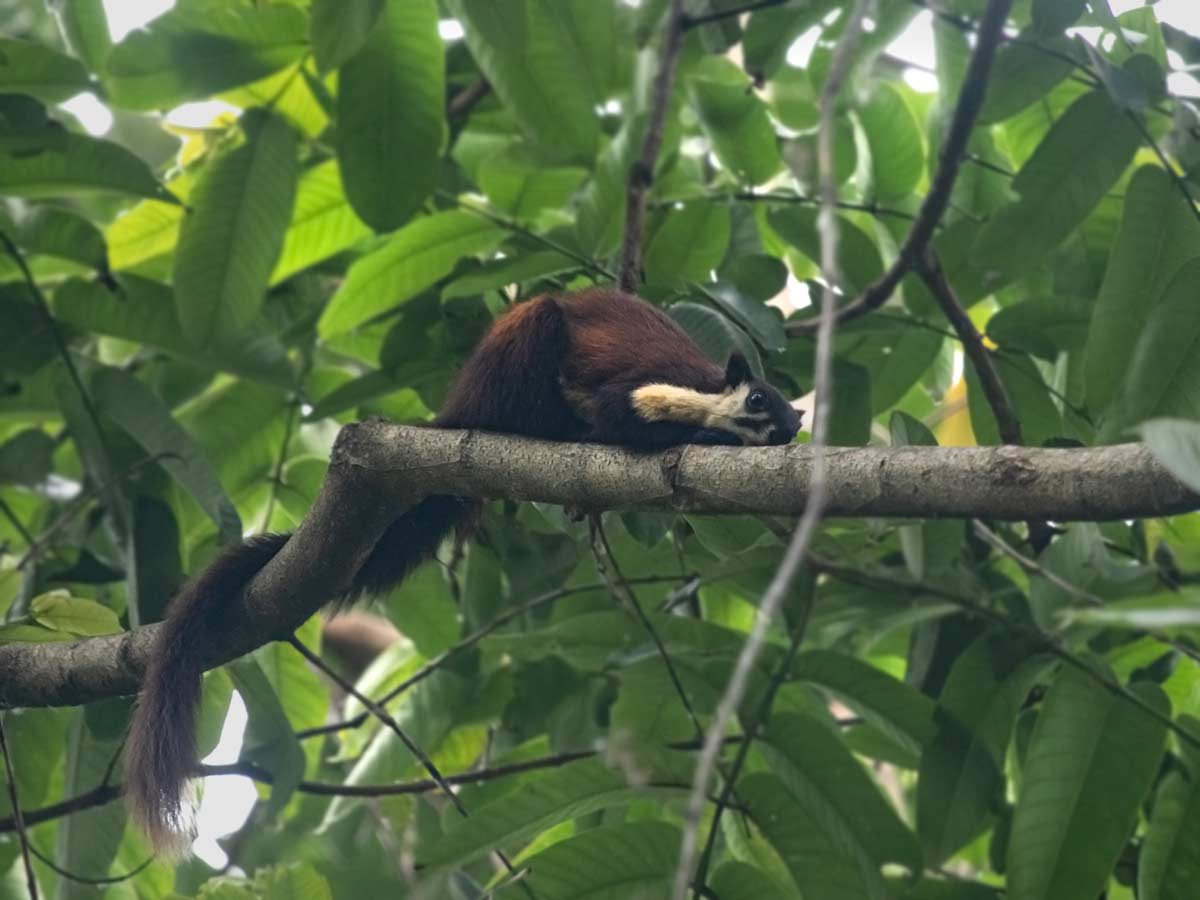
We stopped in another spot to look for birds and suddenly a pair of raptors landed on the topmost branch. They mated immediately and flew away. I saw the beautiful crest and eyes like they had worn eyeliners, we were so awestruck with the incident that happened moments ago. After removing the binoculars from our eyes only we realized , that we had seen Jerdon’s baza. That was a lifer for us and we saw their mating too. We were overwhelmed with our sightings of the day and continued our drive. The naturalist told us by evening we will reach a watch tower where we could see the vulnerable Florican !!
So we drove in that direction watching the changing scenery infront of us. That terrain was totally new to us and as the sunlight was fading, the scenery looked more serene. We saw Indian Rhinoceros at distance and a beautiful Barasingha saw us through the grasses.
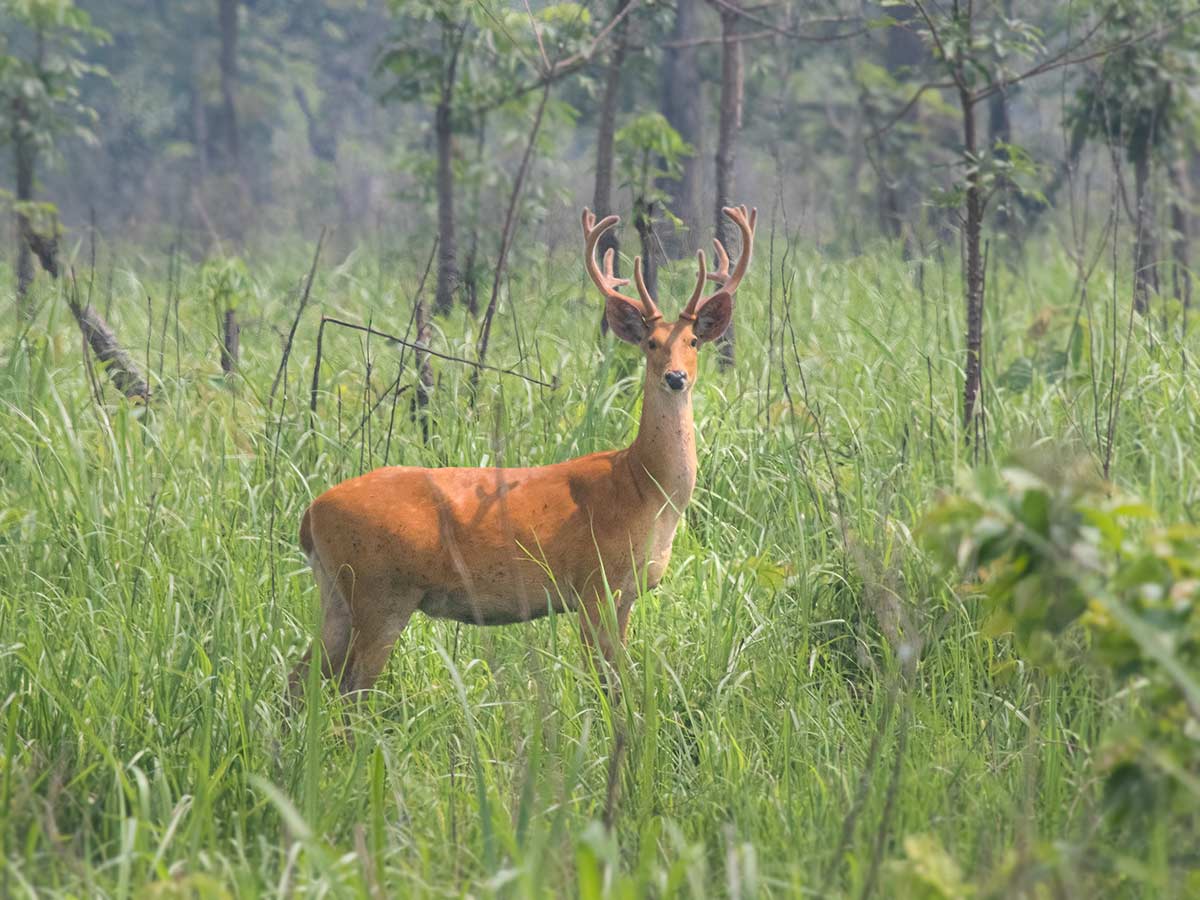
We saw few wild buffalos also foraging around and there was a big herd of elephant at distance. We were hearing the sound of prinia once we entered the grassland. Once we reached the watchtower, we looked very keenly for the Bengal florican. When I was about to lose hope, Vinod squealed and pointed out a small black head popping out now and then amidst grass. Once we spotted the pattern, we could track him continuously and finally he came out to cross the pathway. The Bengal florican looked so beautiful and like always we felt guilty in seeing the endangered bird.
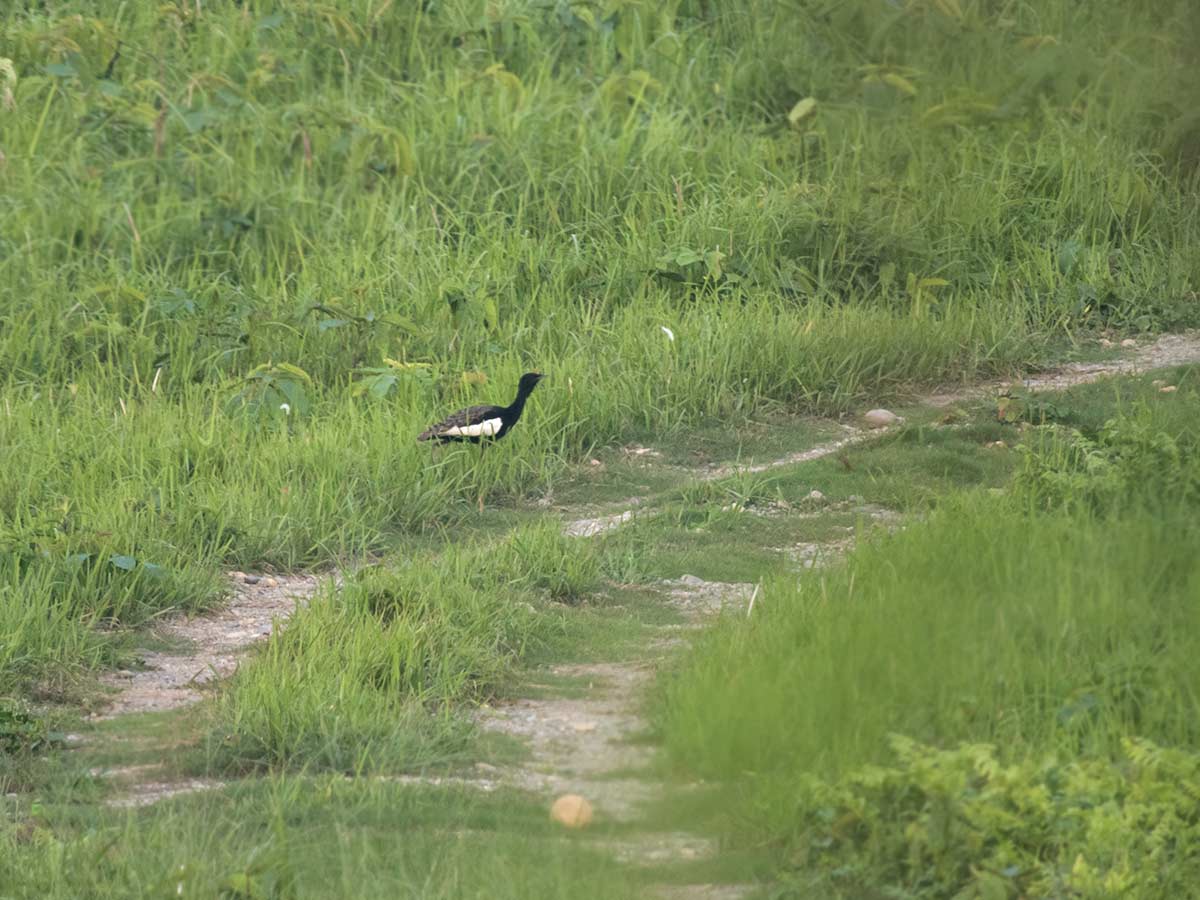
It was very pleasant to stay inside the park during twilight time. We enjoyed watching the elephants in that light. It was time to leave the park and while we were returning back, the nightjars had started their activity. We saw the Long-tailed nightjar on the roadside. That was the first time we did a dawn to dusk safari birding and we really enjoyed it.
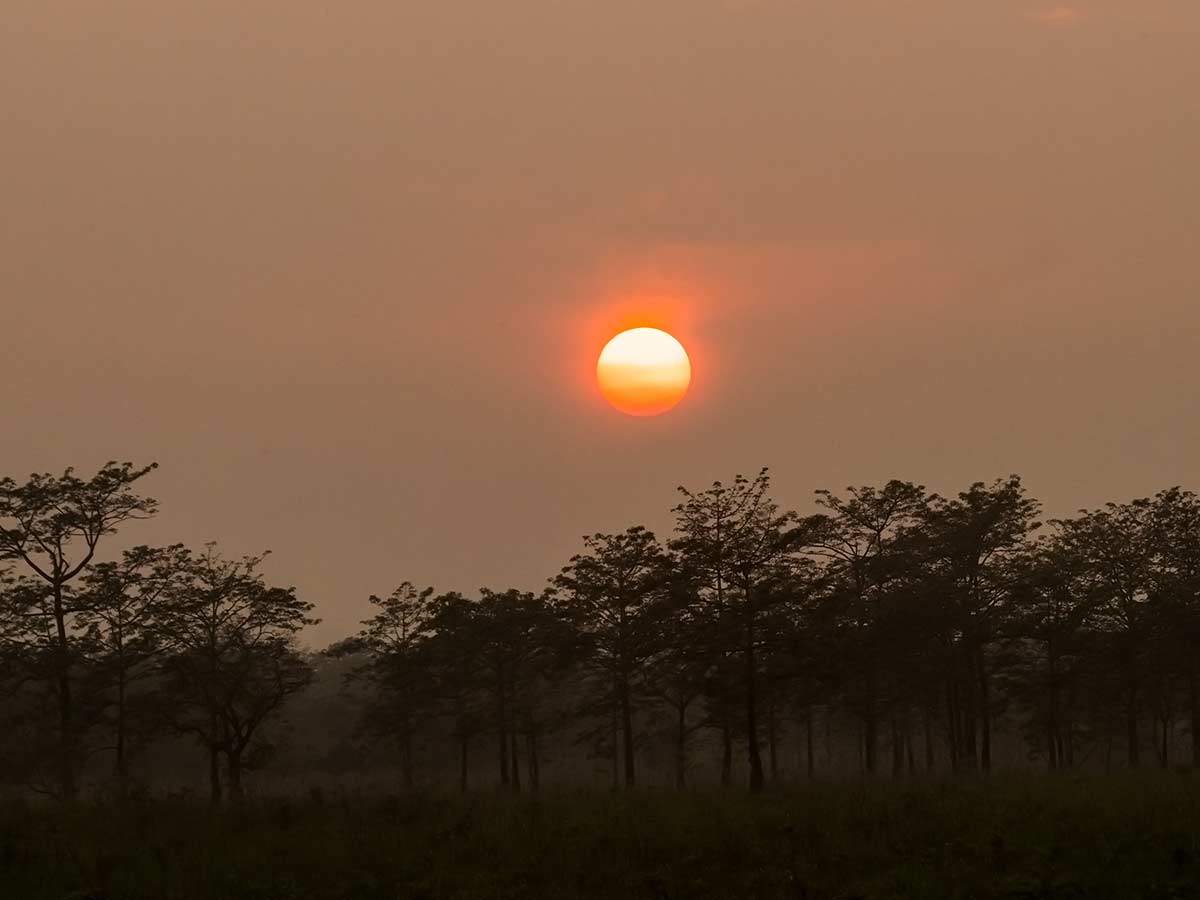
We went for another safari the next day and a pair of Black baza welcomed us at the entrance itself. We saw Fulvous-breasted woodpecker, Chestnut-capped babbler, Blue-breasted Quail, Lesser Coucal, Oriental pied hornbill, White-bellied Erpornis and many other birds in Manas. We thoroughly enjoyed the safari as there was no rush like in the tiger sanctuaries and we didn’t see many tourists also inside the park.
We will surely visit this park in different season to see migratory birds. Manas National Park is a haven for many rare, endangered wild beings. Here is a vlog on our Manas national park birding